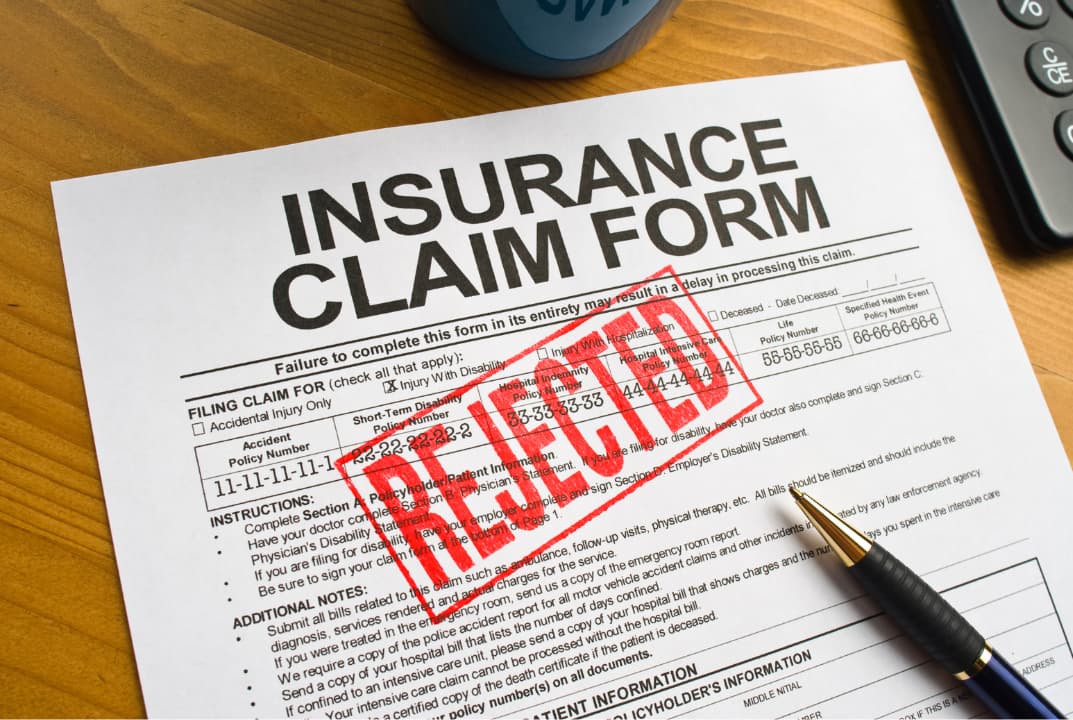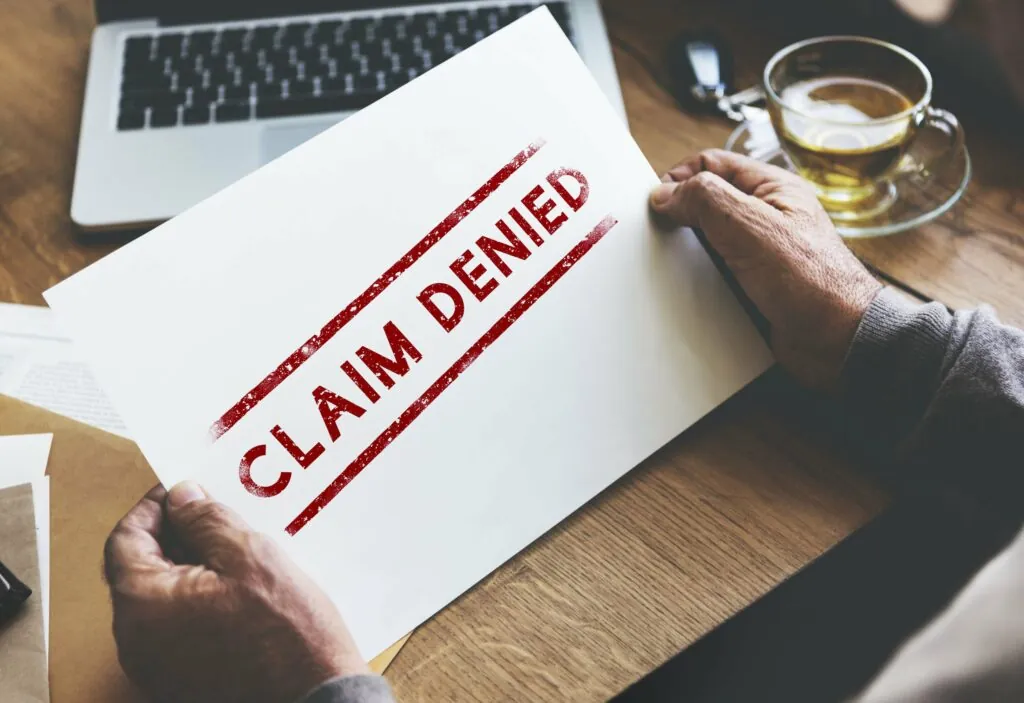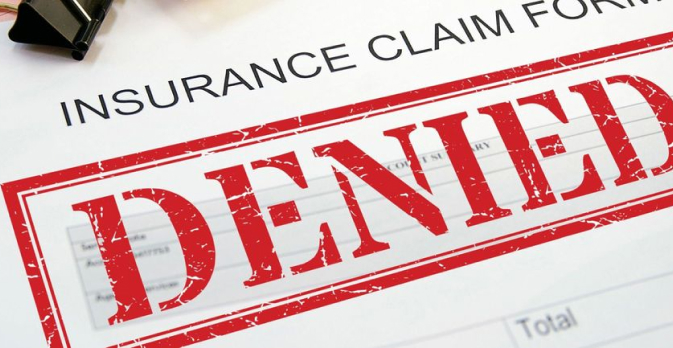Eaton Wildfire Insurance Claim Denied? What to Do Next
Wildfires are unpredictable, unforgiving, and increasingly common across the Western United States. They tear through neighborhoods, displace families, destroy homes, and leave a lasting scar. In the wake of such devastation, survivors often cling to one source of security: their insurance policy.
You pay your premiums faithfully, expecting protection when disaster strikes. But then it happens: your wildfire insurance claim is denied.
Suddenly, you’re not just facing physical loss but legal and financial uncertainty. If this is your reality, know that you are not alone and you have options available to you.
This article, created by the recovery specialists at Eaton Fire, walks you through every critical step: why wildfire claims get denied, how to fight back, legal remedies, and how we support homeowners and renters in rebuilding their lives.
Table of Contents:
- Understanding Wildfire Insurance Coverage
- Common Reasons Why Wildfire Claims Are Denied
- Examples of Denied Wildfire Claims
- What to Do Right After a Denial
- Top 5 Questions After a Wildfire Claim Denial
- Filing a Dispute or Legal Appeal
- Understanding Bad Faith in Insurance Denials
- Legal Strategies for Reversing Denied Claims
- How Eaton Fire Fights for Wildfire Survivors
- Your Next Move: Get Help and Take Action
1. Understanding Wildfire Insurance Coverage
Most standard homeowners and renters insurance policies offer protection against fire-related damages, including wildfires. However, the details matter, and coverage depends on:
- Where you live (wildfire-prone areas may have limits)
- Your specific policy wording
- Policy endorsements or riders
- When your policy was written or renewed
- Dwelling protection: This covers the repair or rebuilding of your home in the event of a loss.
- Other structures include detached garages, barns, and fences.
- Personal property: Covers belongings inside your home, including furniture, electronics, clothing, and valuables.
- Additional Living Expenses (ALE): Reimburses hotel stays, food, and transportation if you’re displaced.
- Debris removal: Covers cleanup after destruction.
- Smoke and soot remediation: Removes odors and residue from affected areas.
2. Common Reasons Why Wildfire Claims Are Denied

Here are the top reasons wildfire insurance claims are denied:
1. Policy Exclusions
Your policy may have a clause excluding wildfire damage, especially if you live in a high-risk ZIP code.
If you didn’t provide photos, receipts, or a complete inventory of your property loss, the insurer may say they lack “sufficient evidence.”
Many policies require you to report damage within a specific timeframe, typically 30 days or less. Missing that window gives insurers grounds to deny.
Insurers often shift blame by claiming you didn’t:
- Maintain defensible space
- Clear dead brush
- Install ember-resistant vents or Class A roofs
If your home suffered smoke, heat, or soot damage but didn’t ignite, the insurer might say the damage wasn’t directly caused by fire.
Some claims are partially denied or underpaid because the policyholder didn’t update coverage limits as property values rose.
3. Examples of Denied Wildfire Claims
One of the most powerful ways to understand what you might be facing is to learn from real-world cases. Wildfire claim denials often seem unreasonable on the surface, but when the details are revealed, the truth becomes clear: insurance companies usually deny valid claims to protect their bottom line.
Below are three expanded case studies involving homeowners and renters who were initially denied until they took action and fought back.
🏠 California Case – “Not Enough Proof”
Following the catastrophic Paradise Fire in Northern California, tens of thousands of homes were damaged or destroyed. One homeowner, let’s call him Robert, lost nearly everything. His home, vehicles, tools, personal possessions, and even family heirlooms were reduced to rubble and ash. In the emotional aftermath, Robert did what most of us would do: he contacted his insurance company and filed a claim.
Initial Submission:
Robert submitted photos taken on his phone after returning to his property. He also included a contractor estimate for rebuilding, which pegged the loss at over $500,000. In total, he submitted:
- 14 cell phone images
- A single handwritten itemized list of personal property
- A general contractor’s estimate
They argued:
- The photos did not provide explicit angles or timestamps
- The loss inventory lacked detail
- The contractor’s estimate did not include a breakdown of materials, labor, or code compliance adjustments
- No pre-loss photos or ownership proof was provided
Robert turned to a wildfire recovery legal team after feeling overwhelmed and ignored. With expert help, they:
- Compiled a comprehensive loss inventory (over 120 pages) listing every item lost, including estimated values, age, and source
- Retrieved Google Street View images and property records to prove pre-loss conditions
- Hired an independent public adjuster who re-inspected the property and provided a detailed damage report
- Re-submitted the claim using industry-standard Xactimate software with replacement cost values
The insurer was confronted with irrefutable evidence, professional documentation, and the threat of a lawsuit for bad faith. Within 60 days, they reversed their decision and issued a settlement of $480,000, covering the full dwelling amount, additional living expenses, and contents loss.
Lesson:
Even if you submit what seems like sufficient proof, insurers may use vague denials to avoid paying. The burden of proof falls on the homeowner, and that’s where professional guidance can make all the difference.
🏕️ Colorado Case – “Vegetation Violation”
In a remote area near Durango, Colorado, a cabin owner named Elena suffered significant damage during a fast-moving wildfire. The flames scorched the side of her cabin, melted exterior fixtures, and left soot and smoke damage inside. She had maintained the home for 12 years and always paid her insurance premiums on time.
Claim Denial:
Elena filed a claim that included:
- Photos showing burn marks and soot trails
- A report from the local fire marshal
- Repair estimates for siding, roofing, windows, and smoke cleanup
“Failure to maintain adequate defensible space around the property by wildfire prevention requirements.”
They cited “excessive dry pine needles and vegetation” within 30 feet of the home and claimed it increased fire risk.
The Problem:
Elena was shocked. She had always followed the local fire department’s guidelines, which recommended 15 feet of clearance from the cabin. She even had an official Wildfire Mitigation Certificate from the county issued just a few months before the fire.
Legal & Technical Review:
Her attorney and mitigation specialists immediately began working on her case. They:
- Presented the mitigation certificate as proof of compliance
- Compared the insurer’s requirements with actual county fire codes
- I interviewed the fire marshal, who confirmed Elena followed all prevention steps
- Brought in a wildfire behavior expert who concluded that embers, not ground vegetation, caused the damage
Faced with irrefutable evidence and potential exposure to penalties for bad faith, the insurance company reversed its denial. It issued a full payout for structural and smoke damage along with additional living expenses Elena had paid out-of-pocket while displaced.
Lesson:
Insurers may impose “extra” conditions not required by law, hoping homeowners won’t challenge them. Knowing your local regulations and legal rights can protect you from false denial based on “negligence.”
🛏️ Renters Insurance Case – “No Fire Damage”
Marcus, a renter in Southern Oregon, lived in an apartment complex a few blocks from the direct fire line during a regional wildfire event. While his building didn’t burn down, it was exposed to severe smoke, ash, and heat for over 48 hours. Windows were left cracked during the evacuation, allowing soot to settle on clothes, furniture, electronics, and even into his HVAC system.
Claim Filing:
Marcus filed a renters insurance claim for:
- Furniture replacement
- Clothing and bedding
- Electronics (TV, gaming consoles, and computers)
- Temporary hotel stays (after the building was deemed unsafe by the landlord)
His insurer responded with the following:
“No direct fire damage observed. Smoke and odor do not constitute a covered loss under this policy.”
The Technicality:
His policy was vague. It didn’t explicitly name smoke damage as a covered peril but didn’t exclude it, either. The insurer argued that since the unit was not directly burned, the contents were unaffected in their view.
Challenge and Appeal:
Marcus contacted a legal team and environmental specialist, who:
- Conducted an air quality and residue test in the unit
- Found particulate matter from burned plastic, wood, and chemicals
- Used industry data to prove long-term health and electronics risks due to fine soot
- Referenced precedent-setting court cases where smoke intrusion was deemed valid damage
- Reanalyzed the policy language and cited ambiguous terms that should favor the insured
With mounting evidence, expert reports, and pressure from Marcus’s attorney, the insurer relented and offered a $68,000 settlement to replace belongings and reimburse living expenses.
Lesson:
Even if nothing visibly burns, smoke and heat damage can render your home and belongings unusable or hazardous to inhabit. Don’t let an insurer dismiss these real, documentable impacts.
Why These Examples Matter
But you don’t have to.
When you:
- Present clear evidence
- Get expert legal help
- Understand your rights
- Challenge vague denial reasoning
You increase your chances of a successful recovery exponentially.
At Eaton Fire, we use cases like these to strengthen your appeal or legal strategy. We know what works because we’ve fought and won for people just like you.
4. What to Do Right After a Denial
Insurers must provide a written explanation stating:
- The exact policy language used
- The reasons for denial
- The evidence (or lack of it) supporting their position

Not just the declarations page. You need:
- Full terms and conditions
- Endorsements and riders
- Exclusion lists
- Renewal notices
Organize:
- Loss inventories
- All photos and videos
- Communication with adjusters
- Receipts and quotes
- Police/fire reports
Insurers may pressure you into signing a lowball settlement or final release. Don’t sign anything until:
- You understand your rights
- You’ve had a legal expert review it
- You’ve explored appeal options
5. Top 5 Questions After a Wildfire Claim Denial
Q1: Can I still get paid after my claim was denied?
Yes. Denials can be appealed, disputed, or litigated in court. Many claims are wrongly denied due to adjuster error or vague policy terms.
Q2: Is there a time limit to act?
Yes. Each state has:
- Appeal timelines (usually 30–60 days)
- Statutes of limitations for filing lawsuits (often 2–4 years)
- Delaying can forfeit your rights. Act quickly.
Q3: Will hiring a lawyer scare the insurer?
In many cases, yes, and that’s a good thing. Once represented, insurers know they can’t bully or manipulate you. They must communicate through legal channels, which may expose them to penalties for bad faith.
Q4: Can I afford a lawyer?
At Eaton Fire, our legal partners work on a contingency fee basis. You don’t pay unless we win. We advance costs and only get paid from the recovered settlement.
Q5: Can renters also appeal claim denials?
Absolutely. Renters are entitled to:
- Personal property replacement
- Temporary housing
- Emergency funds
6. Filing a Dispute or Legal Appeal
If you’re ready to fight your denial, here’s what the process often looks like:
This is your first step. You may be able to:
- Submit additional documents
- Request a second adjuster
- Challenge policy interpretations
Every state has an insurance commissioner or oversight agency. Filing a complaint can:
- Trigger a case audit
- Apply public pressure
- Speed up reconsideration
When denials are unjust or illegal, filing a lawsuit may be necessary. Legal action can result in:
- Full policy payment
- Attorney fees
- Punitive damages
7. Understanding Bad Faith in Insurance Denials

Bad faith occurs when an insurer:
- Refuses to pay without proper investigation
- Misrepresents policy language
- Delays processing intentionally
- Undervalues your losses
- Pressures you to accept an unfair settlement
- You’re being ghosted
- You receive generic or vague denial letters
- Your adjuster keeps changing
- They deny it without inspecting
- They ignore your appeal
8. Legal Strategies for Reversing Denied Claims
At Eaton Fire, we work with legal experts who:
- Demand full policy documentation
- Conduct third-party inspections
- Depose insurance representatives
- Present evidence of policy compliance
- Use state laws and case precedents to build leverage
9. How Eaton Fire Fights for Wildfire Survivors
We are not a law firm. We are not adjusters. We are your wildfire recovery partner.=
At Eaton Fire, we:
- Review policies and denial letters
- Document losses with trained specialists
- Connect you with experienced fire attorneys
- Represent your interests from start to finish
- Help homeowners, renters, and small businesses
We’re proud to help wildfire victims across:
- California
- Texas
- Oregon
- Washington
- Arizona
- Colorado
10. Your Next Move: Get Help and Take Action
If your wildfire insurance claim was denied, don’t suffer in silence. Fight back. With the proper support, you can turn a “no” into a full and fair recovery.
Eaton Fire is here to help.
- ✅ Free denial and policy review
- ✅ Legal consultation within 48 hours
- ✅ We handle documentation, negotiation, and appeals
- ✅ No upfront fees you don’t pay unless we win

- A downloadable PDF
- An HTML landing page
- A segmented email campaign
- Or a set of social media excerpts

